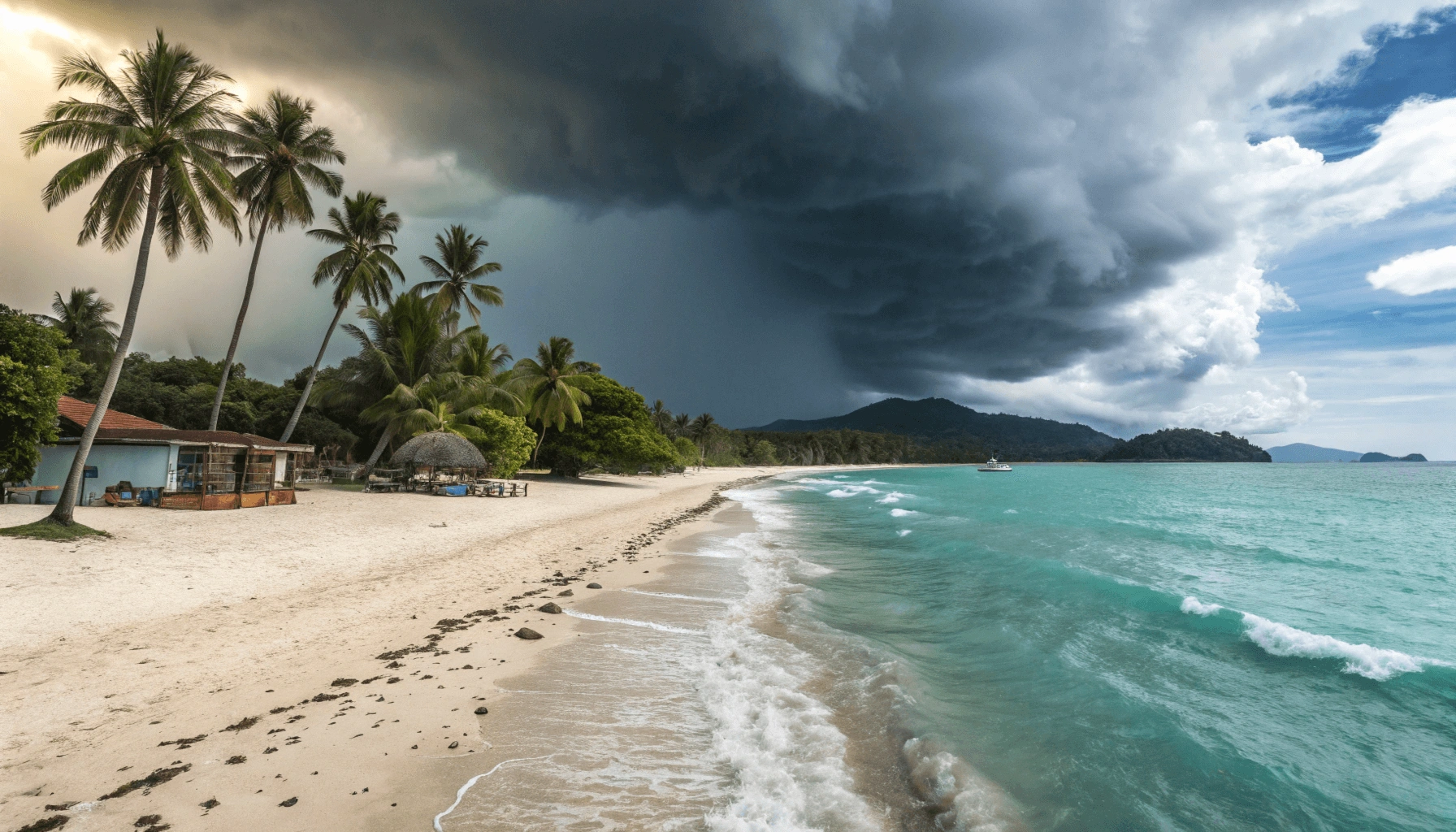Looking for the worst time to visit Malaysia? You’ve come to the right place. While Malaysia offers incredible experiences year-round with its vibrant cities, pristine beaches, and lush rainforests, timing your visit can make or break your vacation. This comprehensive guide will help you navigate the potential pitfalls of Malaysian travel seasons to avoid disappointment.
Malaysia is undoubtedly a tropical paradise, but certain periods can present significant challenges depending on your destination and planned activities. We’ll examine the monsoon seasons, haze problems, crowding issues, and price fluctuations to help you make informed decisions about when to potentially avoid traveling to this beautiful Southeast Asian nation.
What makes this guide different? Rather than glossing over the negatives, we’re diving deep into the specific challenges you might face during different times of the year across Malaysia’s diverse regions. Armed with this knowledge, you can plan a Malaysian adventure that avoids the worst conditions for your particular travel style and destination preferences.
Table of Contents
Why Timing Your Malaysia Trip Matters: Avoiding the Downsides
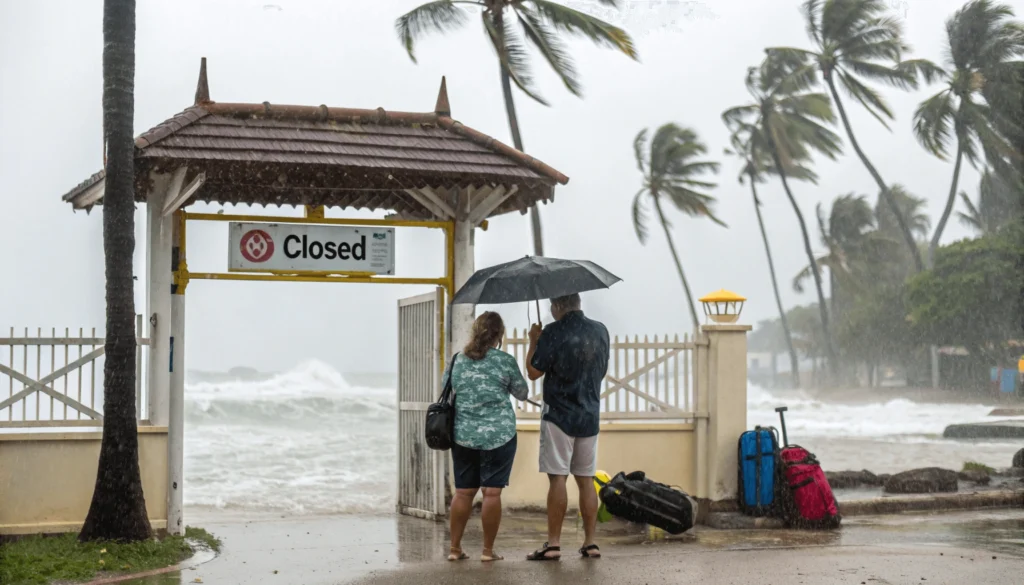
Visiting Malaysia during suboptimal periods can significantly impact your experience in various ways:
- Weather disruptions: Monsoon rains can wash out beach holidays, create dangerous trekking conditions, and cause boat trip cancellations.
- Health concerns: Seasonal haze can trigger respiratory issues and ruin scenic views.
- Overcrowding: Peak tourist seasons mean long lines, packed attractions, and a less peaceful experience.
- Budget impacts: High-demand periods lead to inflated accommodation and transportation costs.
- Limited access: Some destinations, particularly East Coast islands, completely shut down during certain months.
Understanding these factors is crucial for planning a Malaysia trip that meets your expectations and avoids major disappointments. Let’s examine each factor in detail.
The #1 Factor: Understanding Malaysia’s Monsoon Seasons
Malaysia’s tropical climate means it’s generally hot (average 27-32°C/81-90°F) and humid year-round. However, the country experiences distinct monsoon seasons that affect different regions at different times. This creates a complex patchwork of “worst” times depending on where you want to go. According to Malaysia’s Meteorological Department, regional monsoons strongly influence rainfall patterns, with the Northeast and Southwest monsoons shaping travel conditions significantly across the country.
Northeast Monsoon (Approx. November – February): The “Worst Time” for the East Coast
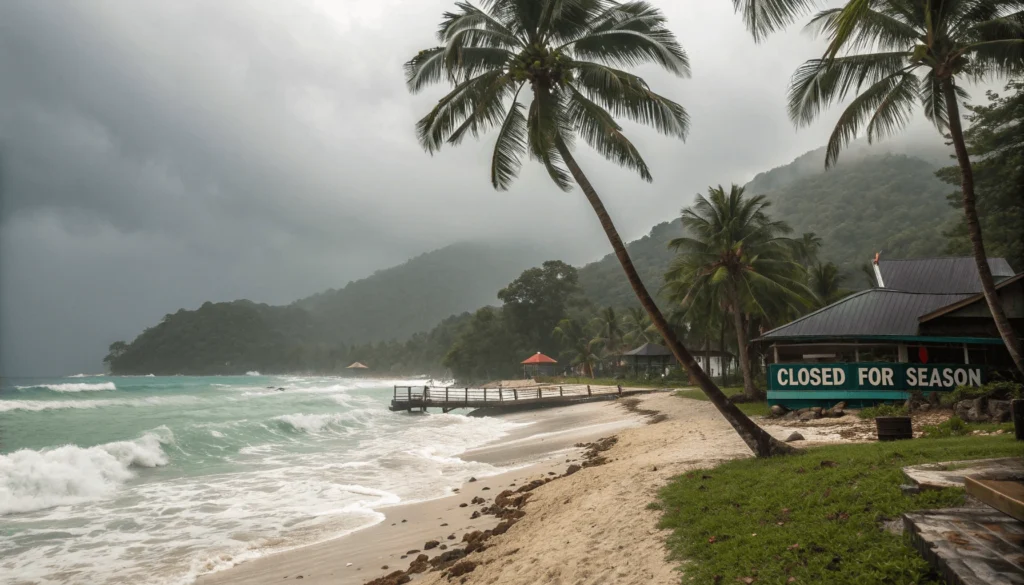
Regions Affected: Peninsular Malaysia’s East Coast (Kelantan, Terengganu, Pahang), including popular islands (Perhentian, Redang, Tioman).
Impact: This is widely considered the absolute worst period for East Coast travel. Expect:
- Heavy, persistent rainfall (often daily downpours lasting hours)
- Strong winds creating dangerous conditions
- Extremely rough seas making boat travel hazardous or impossible
- Complete closure of many island resorts and ferry services
- Potential flooding in mainland coastal areas
- Limited outdoor activities
- Reduced visibility for snorkeling and diving
“I visited Kuala Terengganu in December, hoping the warnings were exaggerated. They weren’t. It rained so heavily for three straight days that streets flooded and I couldn’t leave my hotel. The planned island trip was completely impossible.” — Experienced Malaysia traveler
Verdict: High avoidance factor for East Coast beach/island holidays. If your dream is to visit the Perhentian Islands or Tioman, absolutely avoid November through February.
Southwest Monsoon (Approx. May – October): Less Severe but Impacts the West Coast
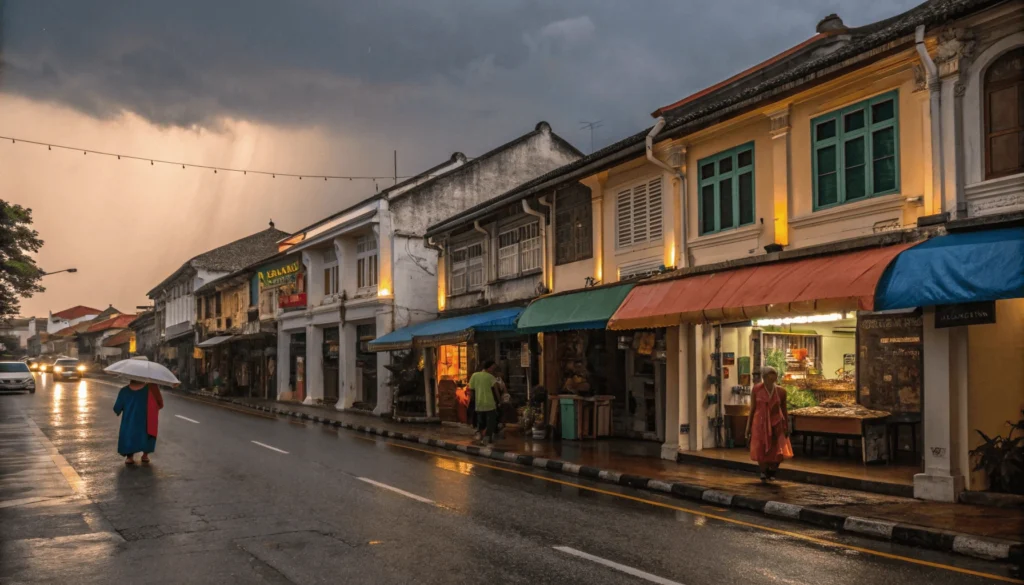
Regions Affected: Peninsular Malaysia’s West Coast (Langkawi, Penang, Pangkor), Kuala Lumpur, and western states.
Impact: Less intense than the Northeast Monsoon but still brings:
- Short but intense afternoon and evening downpours
- Choppier seas than during dry season
- Occasional disruption to outdoor activities
- Brief periods of high humidity before storms
- Some beach erosion in coastal areas
Verdict: Less “worst” and more “potentially inconvenient” for West Coast or KL-focused trips. The Southwest Monsoon is generally manageable with flexible planning, as rain typically falls in predictable patterns rather than all day. Morning activities are often unaffected, with afternoon downpours clearing by evening.
Borneo’s Rainy Seasons (Sabah & Sarawak): A More Complex Picture
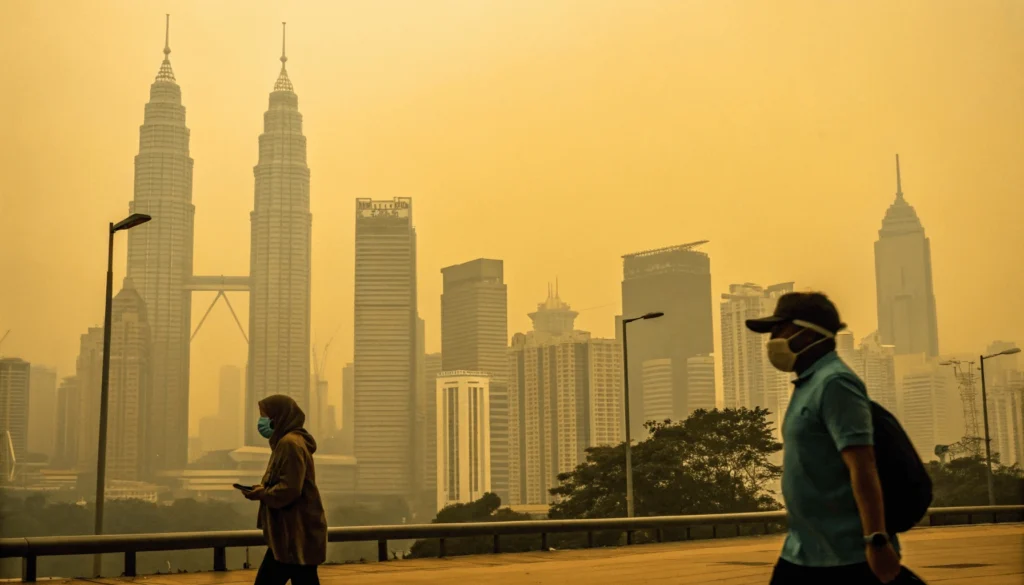
Regions Affected: Malaysian Borneo states of Sabah and Sarawak.
Impact: Borneo receives rainfall year-round, but conditions are often more challenging between October and March:
- Heavier rainfall making jungle treks more difficult and potentially dangerous
- Muddy, slippery trails in national parks
- Reduced visibility for wildlife spotting
- Rougher river journeys affecting traditional boat travel
- Potential flooding in low-lying areas
- Occasional disruption to small aircraft flights to remote areas
Verdict: There’s less of a defined “worst” season for Borneo, but travelers should be prepared for rain regardless of when they visit. If planning specific activities like climbing Mount Kinabalu or wildlife spotting in Danum Valley, research the optimal conditions for those specific activities, as microclimates create varying conditions. The Sabah Tourism Board offers detailed guidance on seasonal weather and recommended travel months for activities like hiking Mount Kinabalu or exploring the Danum Valley.
The Haze Hazard: An Unpredictable “Worst Time” Factor
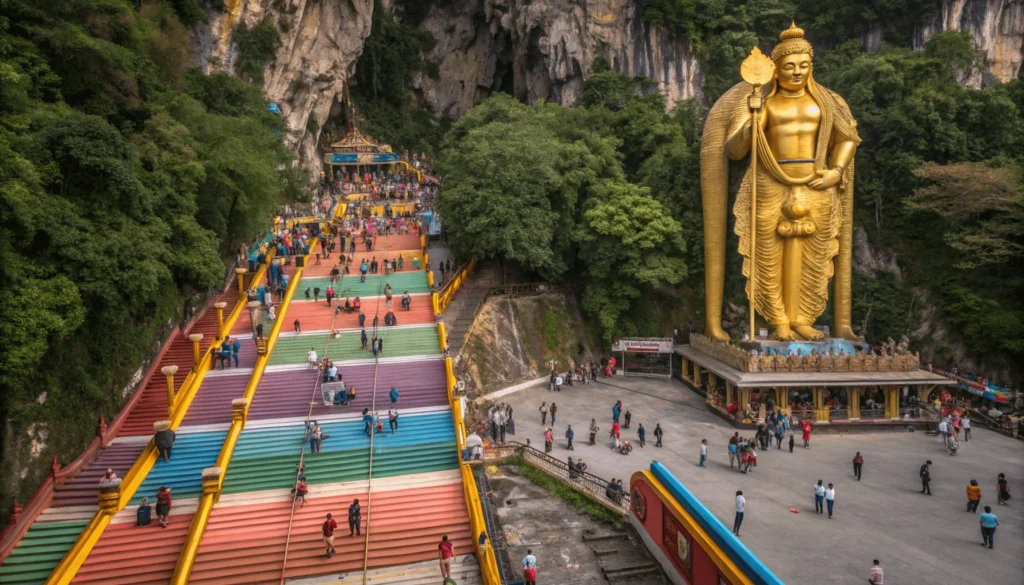
Beyond monsoons, Malaysia faces another weather-related challenge that can create truly unpleasant conditions: the seasonal haze.
What it is: Smoke and particulate matter from forest fires, primarily from slash-and-burn agricultural practices in Indonesia, carried by wind currents to Malaysia.
Typical Timing: Highly unpredictable, but most common between June and October, coinciding partially with the Southwest Monsoon. The severity varies dramatically year to year.
Impact: When haze strikes, it can be one of the worst times to visit Malaysia regardless of other factors:
- Poor Air Quality Index (AQI) readings creating potential health risks
- Respiratory issues, especially for vulnerable groups (children, elderly, those with asthma)
- Dramatically reduced visibility ruining scenic views (KL Tower, Petronas Towers, mountain vistas)
- Flight delays or cancellations during severe episodes
- Outdoor activities becoming unpleasant or potentially hazardous
- Psychological impact as gray skies and limited visibility can dampen vacation spirits
Actionable Advice: Before booking, check historical haze patterns and current forecasts. During planning stages, monitor reliable sources like IQAir or AQICN for air quality predictions.
Verdict: The haze represents a serious “worst time” factor that can affect your entire Malaysian experience regardless of your specific destination. Years with severe haze events (like 2015, 2019) created truly challenging conditions for travelers throughout much of the country.
Peak Season Problems: When Crowds & Costs Make it “Worst”
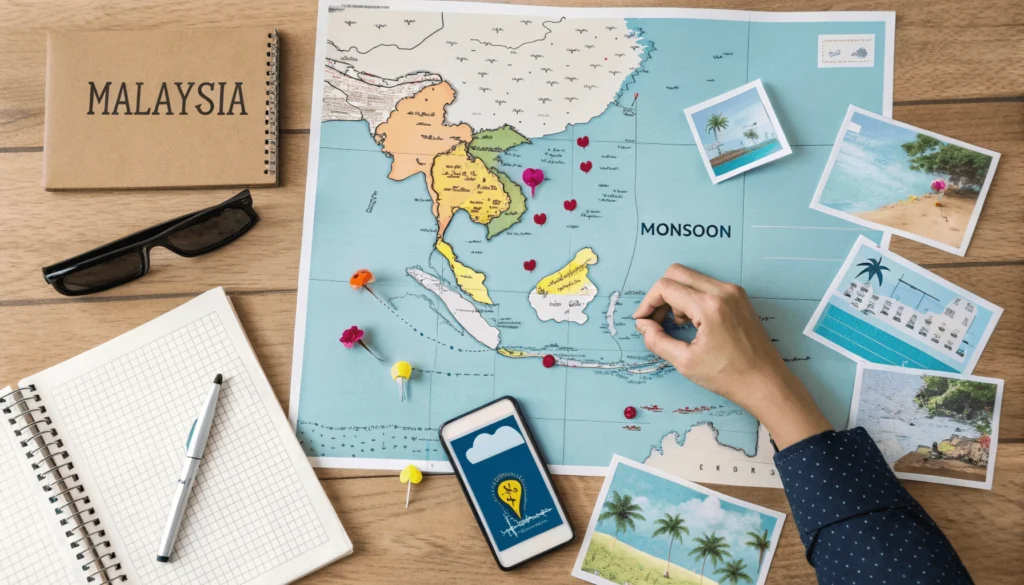
Beyond weather considerations, certain periods can be considered the “worst” times to visit Malaysia if you value peace, quiet, and good value.
Key Peak Periods:
- Major International Holidays:
- Christmas and New Year (December 20 – January 5)
- Easter holidays (dates vary, March-April)
- Chinese New Year (January/February, dates vary by lunar calendar)
- Northern Hemisphere School Holidays:
- European/North American summer (June-August)
- Spring break (typically March)
- Malaysian Public & School Holidays:
- Hari Raya Puasa (Eid al-Fitr, dates vary)
- Hari Raya Haji (Eid al-Adha, dates vary)
- Deepavali (October/November, varies)
- Malaysian school holiday periods (mid-May to early June, mid-November to December)
- National Day celebrations (late August/early September)
Impact:
- Significant crowds at popular attractions (Batu Caves, Petronas Towers, Penang Hill)
- Accommodations fully booked months in advance
- Price surges of 50-200% for hotels and flights
- Longer wait times for restaurants and attractions
- Transportation congestion, especially on popular routes
- Less authentic local experiences as destinations cater to mass tourism
Verdict: These periods represent the “worst time” to visit Malaysia for budget travelers, those seeking tranquility, or travelers who dislike crowds and queues. The combination of Chinese New Year with Western holiday periods can be particularly intense in terms of tourism pressure.
So, When is the Worst Time to Visit Malaysia?
The “worst” time to visit Malaysia depends heavily on your specific destinations and travel priorities. Here’s the general consensus, with important caveats:
General Consensus (with caveats):
- For East Coast beaches/islands: Definitely November to February (Northeast Monsoon)
- For general travel potentially impacted by rain/disruption: The overlap of Southwest Monsoon and potential haze season (June-October) carries risks for multiple regions
- For budget/crowd-averse travelers: Major Malaysian and international holiday periods
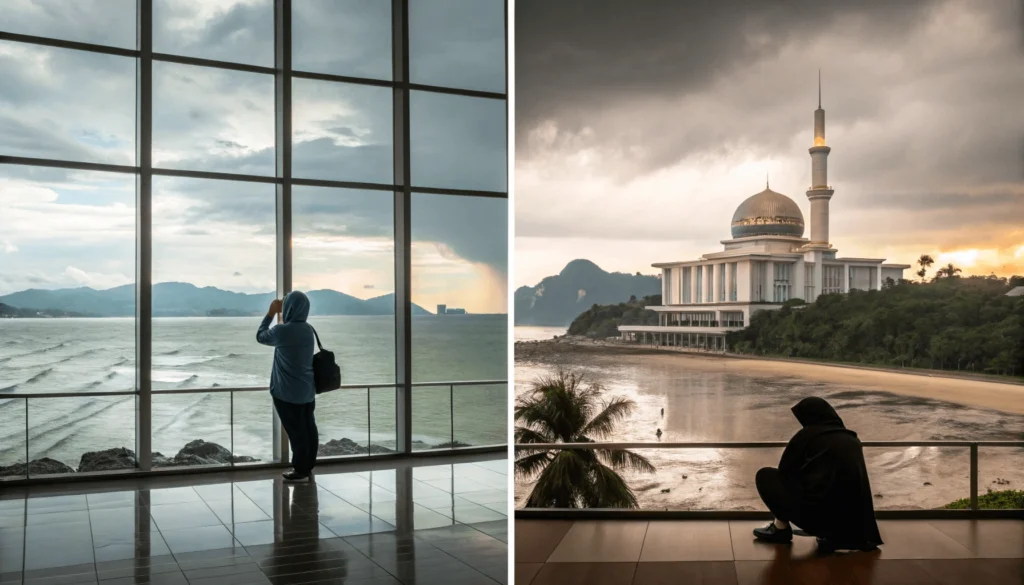
Summary Table: Malaysia’s “Worst” Travel Periods
| Factor | Primary “Worst” Period | Regions Most Affected | Key Impacts |
|---|---|---|---|
| NE Monsoon | Nov – Feb | East Coast Peninsula, Islands | Heavy Rain, Rough Seas, Island Closures |
| SW Monsoon | May – Oct | West Coast Peninsula | Afternoon Showers, Choppier Seas |
| Haze | Jun – Oct (Variable) | Widespread (often W Coast/KL) | Poor Air Quality, Low Visibility |
| Peak Season | Major Holidays | Popular Tourist Areas | High Prices, Crowds, Limited Availability |
What if You Have to Travel During a “Worst” Time?
Sometimes travel dates are non-negotiable due to work schedules, school holidays, or special events. If you must visit Malaysia during one of the challenging periods, here are strategic approaches to minimize disruption:
Monsoon Strategy
If traveling November-February:
- Focus on West Coast destinations (Langkawi, Penang, Melaka)
- Plan urban explorations in Kuala Lumpur with plenty of indoor alternatives
- Consider cultural activities in cities that aren’t weather-dependent
- Book accommodations with indoor facilities (pools, spas)
- Pack appropriate rain gear and waterproof bags
If traveling May-October:
- The East Coast might offer better weather, but check haze forecasts
- Plan early morning activities before afternoon showers on the West Coast
- Be flexible with itineraries to reschedule around rain
- Include buffer days in your schedule for weather delays
Haze Strategy
- Monitor air quality readings daily via apps or websites
- Plan more indoor activities (museums, galleries, shopping) during poor air quality days
- Pack N95 masks if traveling during potential haze season
- Consider booking refundable accommodations that allow changes if conditions worsen
- Be prepared to potentially pivot your itinerary to less affected areas
- Stay hydrated and limit outdoor exertion during hazy conditions
Peak Season Strategy
- Book flights and accommodation 4-6 months in advance for better rates
- Explore less touristy areas beyond the main tourist circuit
- Visit popular attractions early morning or late afternoon
- Travel mid-week when possible to avoid weekend crowds
- Consider private tours for a more controlled experience
- Look for accommodations slightly outside main tourist zones
Why This Guide is Different from “Best Time” Articles
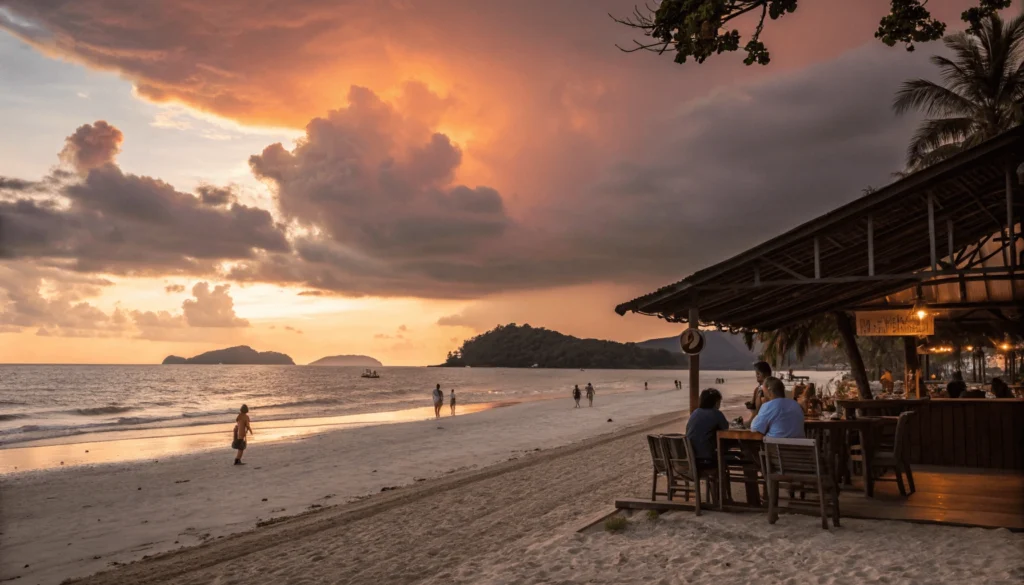
Most Malaysia travel resources focus primarily on ideal visiting times, mentioning challenges only briefly. This comprehensive guide takes the opposite approach by thoroughly examining the potential downsides of each season and region.
Why does this matter? Because understanding what could go wrong is often more valuable for practical trip planning than knowing what could go right. By focusing deeply on the weather patterns, regional variations, and other factors that might negatively impact your trip, we provide insights that help you avoid major disappointments.
This expert-level analysis of the “worst” times to visit gives you the power to make informed decisions based on your personal travel priorities, whether you’re most concerned about weather, crowds, costs, or specific activities.
Conclusion: Planning Around Malaysia’s Challenging Seasons
To summarize, understanding the worst time to visit Malaysia requires considering multiple factors:
- Northeast Monsoon (November-February): Avoid the East Coast and islands
- Southwest Monsoon (May-October): Be prepared for afternoon showers on the West Coast
- Haze Season (June-October, variable): Monitor conditions and have backup plans
- Peak Tourist Periods: Expect crowds and higher prices during major holidays
Remember that personal priorities matter most when determining what constitutes a “worst” time. A budget traveler might find holiday price surges more problematic than occasional rain, while a beach enthusiast would consider monsoon season the absolute worst timing.
Despite these challenges, Malaysia remains an incredible destination with diverse attractions that reward visitors year-round. With careful planning—especially avoiding the specific conditions that would most impact your personal travel style—you’ll have a fantastic Malaysian adventure regardless of when you visit.
What’s your experience with Malaysia’s seasons? Have you visited during one of these challenging periods? Share your insights in the comments below!

